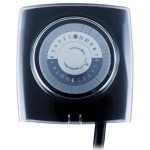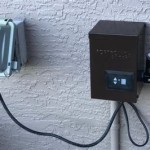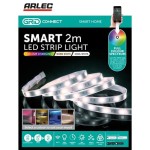How Many Lumens Is Best For An Outdoor Projector
Projecting movies or presentations outdoors offers a unique and enjoyable experience. However, achieving optimal viewing quality requires careful consideration of ambient light, screen size, and projector brightness, measured in lumens. This article explores the relationship between these factors and provides guidance on selecting the appropriate lumen output for various outdoor projection scenarios.
Lumens are the standard unit for measuring a projector's light output. A higher lumen rating generally indicates a brighter image. While brighter might seem universally better, excessive brightness can wash out the image in dimly lit environments. Conversely, insufficient lumens will result in a faint, barely visible projection in bright settings. Therefore, selecting the right lumen output is crucial for a satisfactory viewing experience.
Ambient light is arguably the most significant factor influencing the required projector brightness. Daylight, moonlight, and artificial light sources from streetlights or nearby houses all contribute to ambient light. The more ambient light present, the higher the projector's lumen output needs to be to overcome it and produce a clear image. Projecting during the day requires significantly more lumens than projecting at dusk or night.
Screen size directly impacts the perceived brightness of the projected image. A larger screen distributes the same amount of light over a greater area, resulting in a dimmer image. Therefore, if a large screen is necessary, a projector with higher lumen output is required to maintain image clarity and brightness. For smaller screens, a lower lumen output might suffice.
The relationship between ambient light, screen size, and lumens can be complex. However, some general guidelines can assist in selecting the appropriate projector. For daytime projection with a moderate amount of ambient light and a screen size under 100 inches, a projector with at least 3,000 lumens is recommended. For larger screens or brighter ambient light, 4,000 lumens or more may be necessary.
For dusk or twilight projection with minimal ambient light, the required lumens can be significantly reduced. A projector with 2,000 to 3,000 lumens can often produce a satisfactory image on a screen up to 120 inches. However, increasing the screen size beyond this may require a brighter projector.
Nighttime projection, with minimal to no ambient light, offers the greatest flexibility. Projectors with 1,500 to 2,000 lumens can often provide excellent image quality on screens up to 150 inches. In completely dark environments, even lower lumen outputs can be sufficient.
Beyond lumen output, other factors contribute to the overall viewing experience. The projector's contrast ratio, which describes the difference between the brightest and darkest parts of the image, is crucial for image depth and detail. A higher contrast ratio generally results in a more vibrant and engaging image.
Projector resolution also plays a significant role in image quality. Higher resolutions, such as 1080p or 4K, offer sharper and more detailed images compared to lower resolutions like 720p. The choice of resolution depends on the content being projected and the desired level of detail.
Screen material and its reflectivity, also known as gain, also influence the perceived brightness. Screens with higher gain reflect more light back towards the viewer, making the image appear brighter. This can be beneficial in environments with some ambient light, allowing for the use of a slightly lower lumen projector while maintaining image brightness. Conversely, high gain screens might create hotspots or uneven brightness in completely dark environments.
Throw distance, the distance between the projector and the screen, is another essential consideration. As the throw distance increases, the projected image spreads over a larger area, decreasing its brightness. Projector specifications typically include the throw ratio, which defines the relationship between throw distance and image size. Consulting this specification can help determine the optimal placement of the projector for the desired screen size.
Ultimately, choosing the best lumen output for an outdoor projector requires careful evaluation of the specific circumstances. Considering the ambient light levels, desired screen size, and other factors mentioned above will allow for a more informed decision, resulting in an optimal outdoor viewing experience.

Looking For An Outdoor Daytime Projector Benq Asia Pacific

How Many Lumens For Outdoor Mini Portable Projectors Need Benq Us

What Are The Best Lumens For Outdoor Projector Projectors

What Are The Best Lumens For Outdoor Projector Projectors

How Many Lumens Do I Need For Outdoor Projector Wemax Official

How Many Lumens Are Needed For An Outdoor Projector Projectors

How Many Lumens For Outdoor Projector Do You Need Ninja

How Many Lumens Are Needed For Projector Easy Pick Up

Outdoor Projection How To Create An Cinema Personal Projector

Best Outdoor Projector To Buy For 2024 Radio Times
Related Posts







